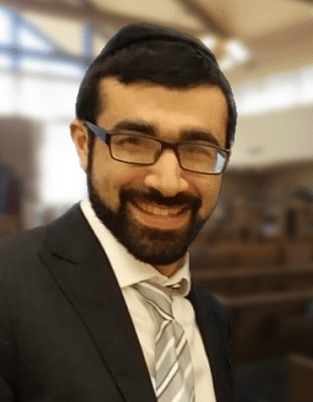by Rabbi Binyomin Halpern

Rabbi Binyomin Halpern
(AJNews) – A number of years ago, as an older student in the WITS Yeshiva in Milwaukee, I would learn once a week with an 8th grader named Joel. One evening, Joel said to me “you know, I can summarize all the Jewish holidays in one sentence. “They tried to kill us, G-d saved us, let’s eat!”
For many of them, Joel is right. On Chanuka we commemorate the fact that the Greeks tried to harm us and persecute our religious freedoms. Hashem saved us in a miraculous fashion, and we acknowledge and thank Hashem through the holiday of Chanuka.
However, The Gemara (Talmud)[1] tells us that the enactment of Chanuka was to set these eight days as ‘yamim tovim’ or holidays, specifically with hallel and hoda’a– with praise and thanksgiving.
Praise and thanksgiving? Um, what about latkes and jelly donuts? What about lighting candles? What does it even mean to celebrate the holiday with hallel? Wouldn’t we expect a little more fanfare?
Literally, Hallel is a series of psalms said throughout the year, and on Chanuka, where we thank Hashem verbally. But true Hallel is not mere ‘lip service’. The word Hallel is related to the word hollelut, meaning light-headedness, and frivolity. When you really feel that you owe thanks to Hashem, the expression will be so heartfelt that you will lose your composure and will want to shout from the rooftops on the top of your lungs.
In addition to Hallel, we can see a similar mood of excitement by looking at the other Chanuka prayer, Al Hanissim.
Al Hanisim, the prayer of hoda’a, thanksgiving, is said both during the Amida (silent prayer) and in Birkat Hamazon (grace after the meal, commonly referred to as bentching.) It is striking however that in the Amida, the words immediately following Al Hanisim are the words vechol hachayim yoducha “every creation will praise You”. The vivid image of every living being joining together to praise G-d, is a powerful illustration of feeling. Here, as well, the message of giddy delight and joy abound is loud and clear. Personally, what comes to my mind is the refrain of Avraham Rosenblum, and the Diaspora Yeshiva Band- “We’ll all say HALLELUKA!!’
Overall, it does seem that the goal is to try to achieve this kind of attitude and excitement when thinking about the miracles of Chanuka.
I know what you are thinking, (or at least what I am thinking) “But I’m not excited. I would love to say Hallel like a Macabee would, but I’m saying it at 7:15 in the morning. My eyes are closed and I’m swaying but that’s because I’m falling asleep standing up!
This is where Joel’s ‘let’s eat!’ comes in. Sufganiot, latkes, and chocolate coins with Hertzl’s picture (do they still make those?) are there to get us excited. Once we are ‘into it’, we can channel that excitement into our praise of Hashem as well. This is what the gemara means when it says that these days are to be yamim tovim, holidays. It does not mean that we have an actual obligation to feast for the sake of feasting. Rather, it means that we should use the feast as a Hallel enhancer, whetting our appetites for genuine gratitude. After all, there is nothing like a good (custard!) donut for dessert to get a great al hanisim in the bentching that follows.
In short, Chanuka is a chance to use food, and anything else that excites us, to celebrate and thank Hashem for blessings, past and present. By celebrating in this way, a mundane plate of latkes becomes a seudat mitzvah – a holy and spiritual meal infused with meaning. Let’s eat!
[1] Shabbat 21b
Rabbi Binyomin Halpern is the spiritual leader of Cong. House of Jacob-Mikveh Israel, Calgary, AB.




Be the first to comment on "Rabbi Binyomin Halpern: Celebrating Food"